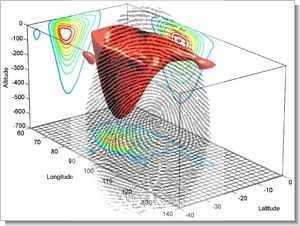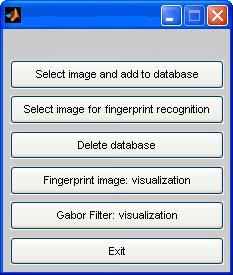
The source codes (.m,.dat) prepared with the fingerprint recognition system program matlab can be useful to those who are dealing with image processing editing. It would be an excellent project if a microcontroller was added and data communication could be established with the computer.
With the increasing emphasis on identity fraud and emerging automated self-identification practices in our society, biometric-based verification, especially fingerprint-based identification, is gaining a lot of attention. Traditional approaches to fingerprint representation have two major shortcomings. For a significant portion of the population, impressions based on the unambiguous detection of all ridge structures in the fingerprint are difficult to extract automatically.
Commonly used granular representation does not use a key component of the rich discriminatory information found in fingerprints. Local ridge structures cannot be fully characterized in detail. Also, feature-based matching has difficulty quickly matching two fingerprint images that contain a different number of unrecorded detail points.
The proposed filter-based algorithm uses a bank of Gabor filters to capture both local and global details in a fingerprint as a compact fixed-length FingerCode. Fingerprint matching is based on the Euclidean distance between two corresponding Finger Codes and is therefore extremely fast. We are able to achieve a validation accuracy that is only marginally lower than the best results of the detail-based algorithms published in the open literature.
Our system outperforms a state-of-the-art detail-driven system when the performance requirement of the application system does not require a very low false acceptance rate. Finally, we show that matching performance can be improved by combining the decisions of matchers based on complementary (minutiae-based and filter-based) fingerprint information.
Localization of the core point represents the most critical step of the whole process. Good matching requires correct positioning, so minor mistakes should also be avoided. As shown in [2], the use of complex filtering techniques can greatly improve accuracy. On the other hand, for very low quality input images, a traditional algorithm may fail even if a hierarchical approach with multi-scale filtering is used.
We have developed a new, hybrid technique for core point detection. To our knowledge, this algorithm is not documented in the literature and is based on mutual information exchanged between developed procedures. The core point location is more accurately determined by combining multiple techniques in this way.
Copy the files to the matlab-in-work/ folder, select the “U.m” file among the source files copied from the “in current directory” section in the matlab control menu, the program will run and the interface will appear.
Matlab Fingerprint Program

Select image for fingerprint recognition: Select image for fingerprint recognition
Delete database: Deletes the image database you created
Finger print image visualization: Displays the fingerprint you selected
Gabor filter visualization: Displays the filtered version of the image
Source: utenti.lycos.it/matlab/fingerprint4.htm Matlab Fingerprint Recognition System Project source code files Alternative link
Password: 320volt.com
Published: 2009/05/09 Tags: electronics software tools
Microcontroller Controlled LCD Screen Battery Charging Circuit PicBasic Pro
battery charging circuit is carried out with the software PIC16F877 prepared with PicBasic Pro 2 × 16 LCD display isis simulation can be observed on the charge status and resources are PbPr asm hex file. Thanks to those who contributed
Program 0.5 volts the 10 steps as a battery character is reflected, level zero, no characters over in the sense flashing warning gives further charging pressing you to a different screen, state of charge batteries again to the character, as moving is reflected If you want different voltages can adapt to the ADC converter @ETE teacher’s notes that I used the program as a base, next to bless the program line are very descriptive definition, I extend my thanks to him. Author: Kerem Süzgün
Charge status, battery charging circuit